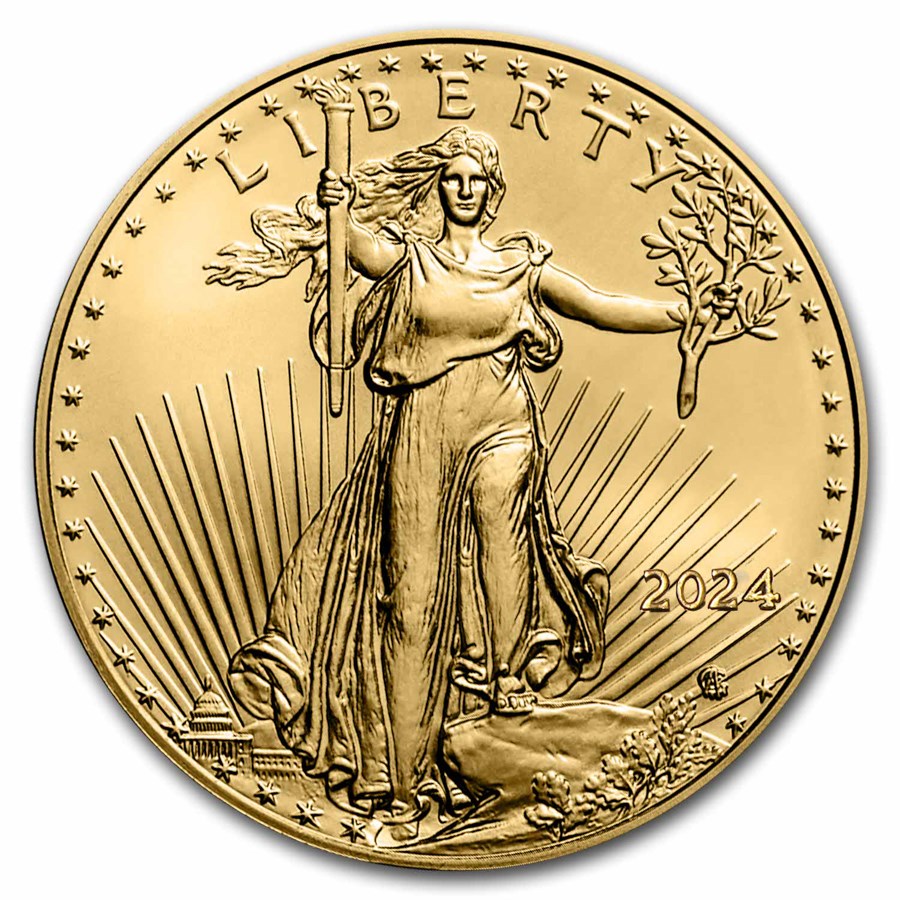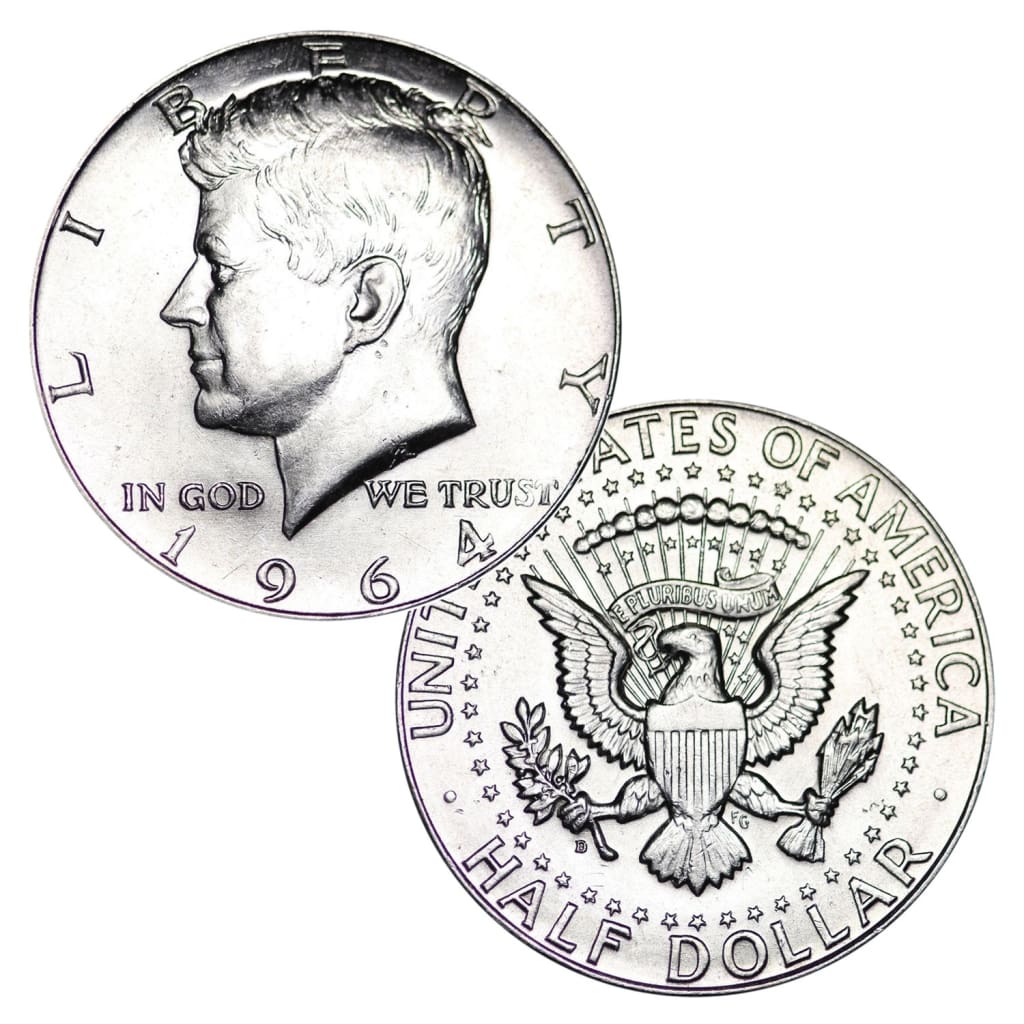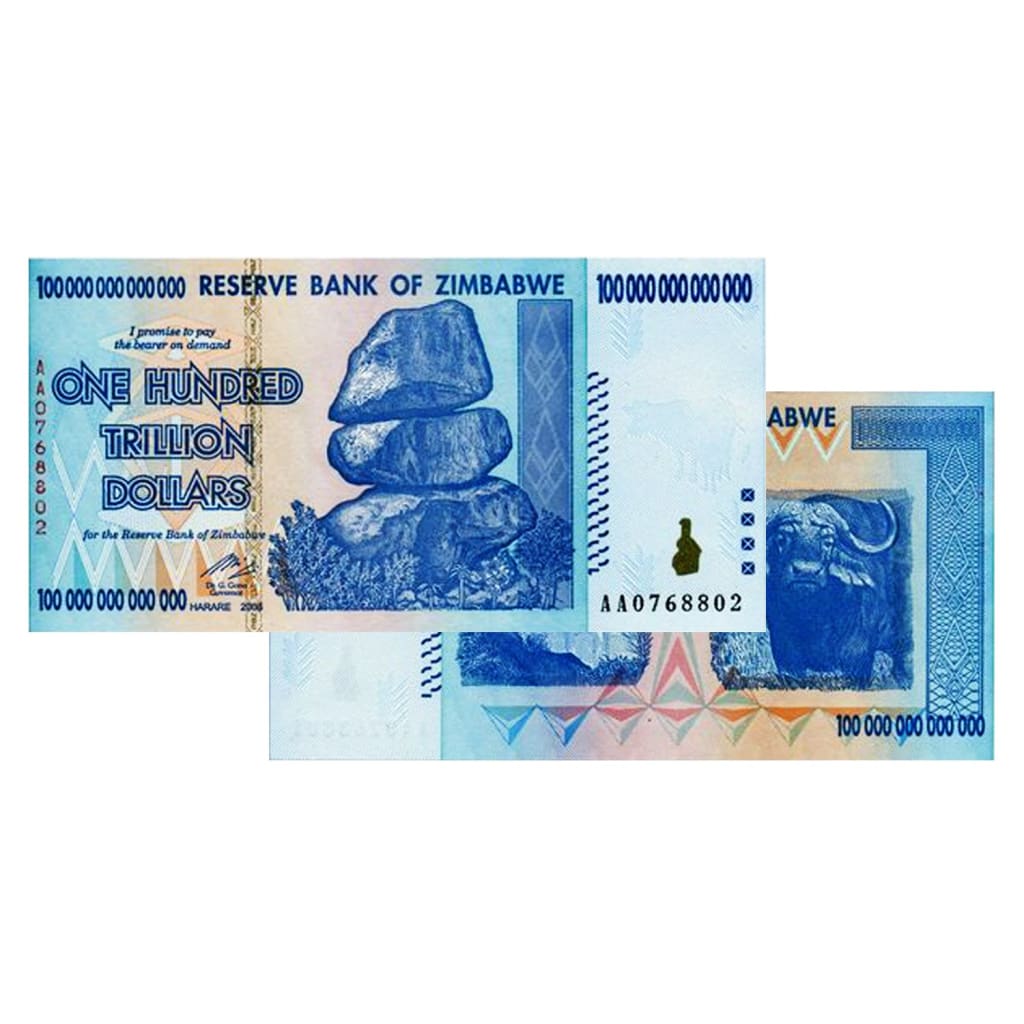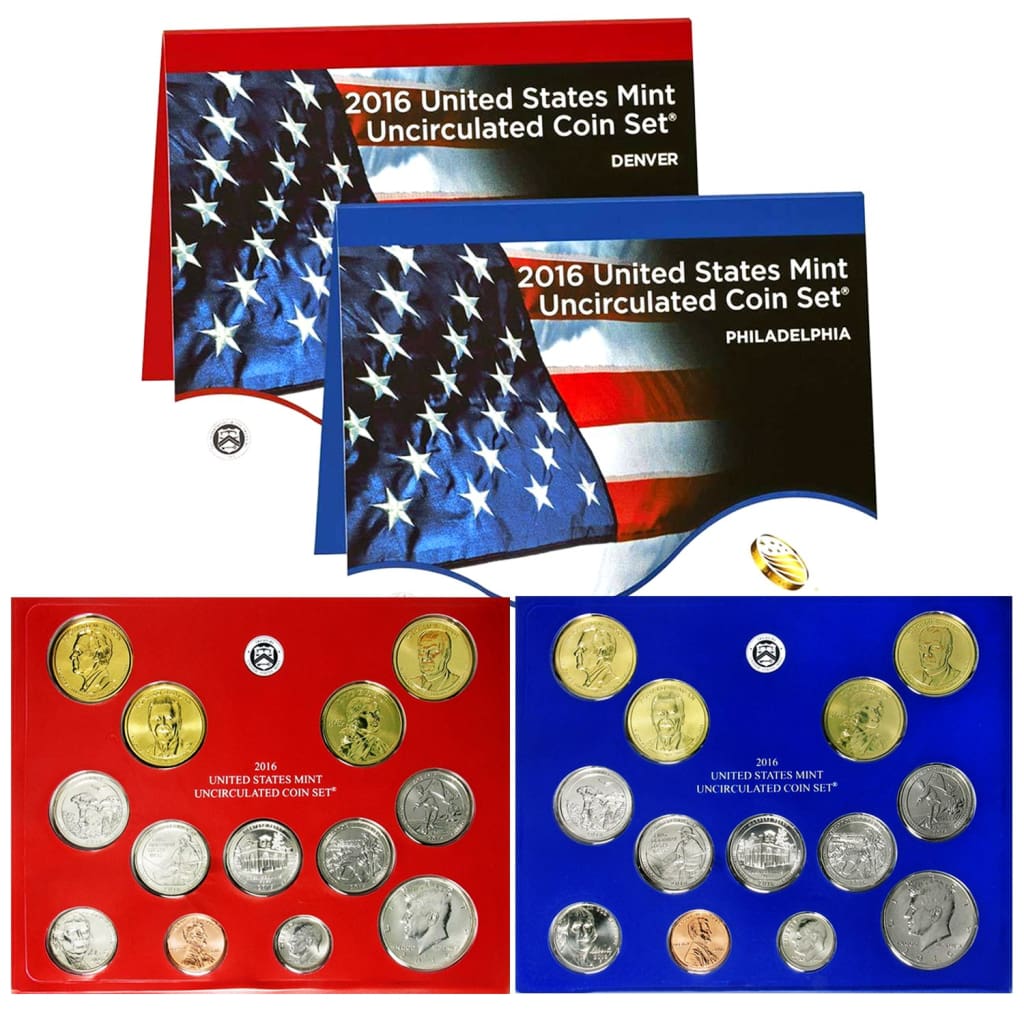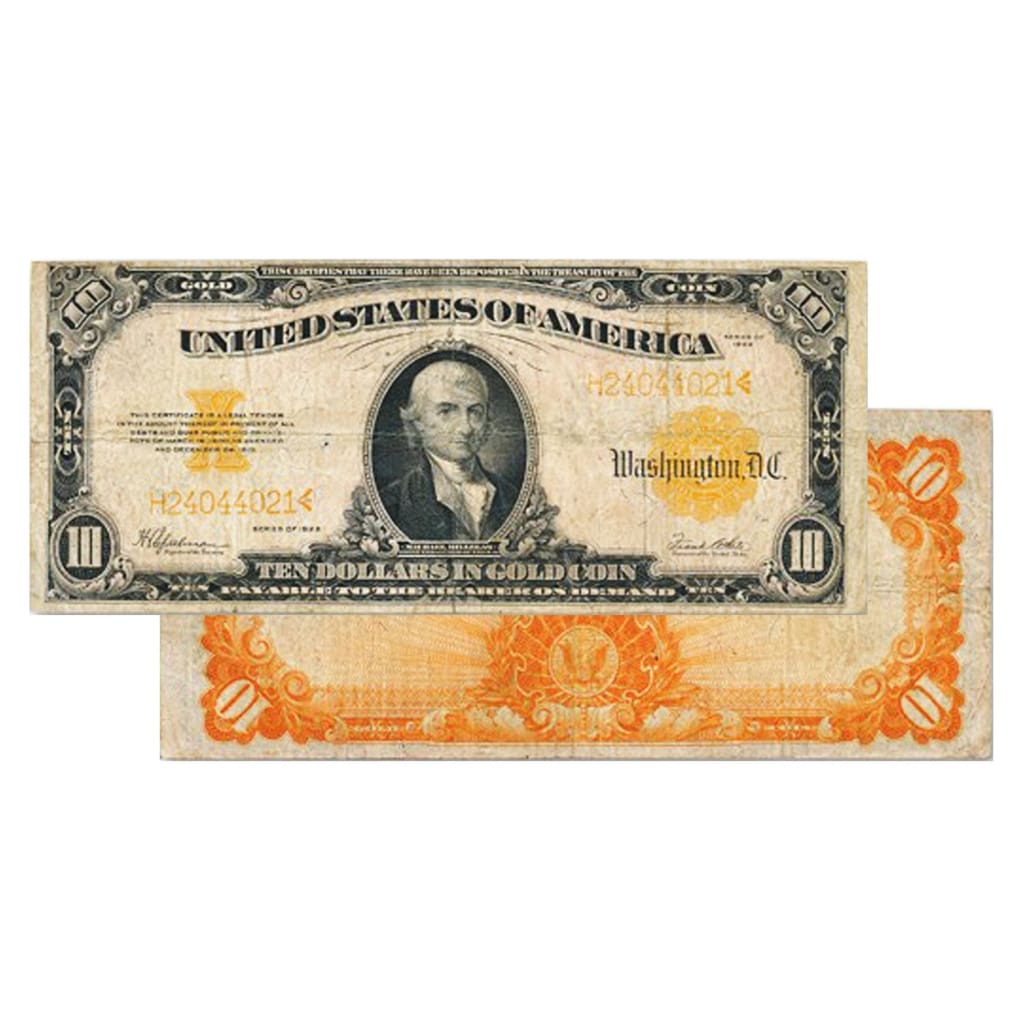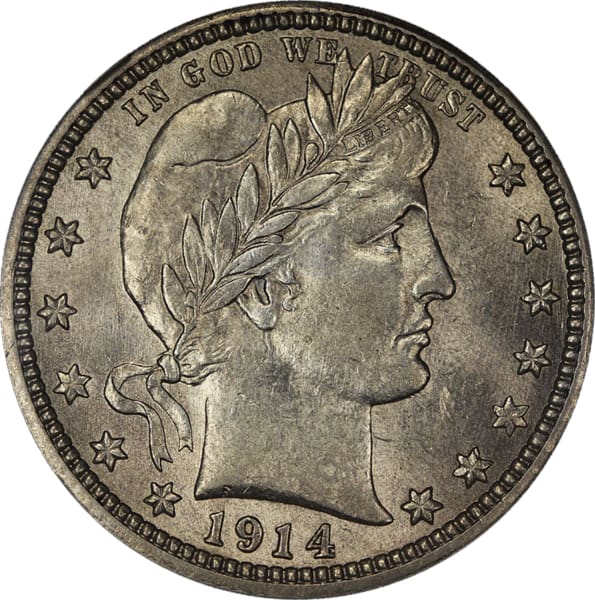By the late 1880s calls to replace the Seated Liberty coin design, in production for sixty years, prompted Mint Director Edward O. Leech to open a competition for a new design in 1891. But with a cash prize offered only for the winning design, prominent artists and engravers weren’t interested.
This led Leech to ask the Mint’s Chief Engraver, Charles E. Barber, to come up with a design for a new generation of silver fractional dollar coins. Barber initially chose a standing Colombia motif that was rejected by Leech, who had specified modeling the coins on current French designs. After some contention, Barber submitted a right-facing bust of Liberty wearing a Phrygian cap and laurel wreath that gained approval for use on dimes, quarters, and half dollars.
The Barber Design
Barber’s Liberty bust appeared on the obverse (face) of the three silver coins. The quarter and half dollar had a heraldic eagle motif on the reverse while the dime carried a wreath of corn and wheat with maple and oak leaves surrounding the legend “One Dime.”
While most US coins have been known by their subject matter, these Liberty bust designs are described by their designer—Barber. This was less flattering than it may seem since the design was widely panned by critics as being plain and uninspired, a judgment that persists today.
Mintage
Production of the Barber quarters began in 1892 at the Philadelphia, San Francisco, and New Orleans mints. The first runs proved difficult to stack due to the way the eagle’s wings slightly overlapped the letter E in “United” and “America” on the reverse legend. The design was modified so that the wings more fully covered the letters, resulting in Type 1 and Type 2 coins in 1892.
Barber quarters were struck continuously at Philadelphia (no mint mark) and San Francisco (S).
New Orleans (O) struck coins from 1892 until the mint’s closure in 1909, and production began at the new Denver mint (D) in 1906.
Rarity and Value of the Barber Quarter
With over 260 million coins produced, Barber quarters are not difficult to find in most dates, mint marks, and grades. Each mint typically struck well over a million coins annually, but a few specimens stand out as collectibles. These include the 1892 Type 1 coins mentioned above as well as a couple of significant dates. 1909-O were the last quarters made in New Orleans and 1906 was the first year for Denver coins. While neither coin is particularly rare (712,000 and 3.28 million, respectively), they represent important years in mint history.
The real rarities are 1913 San Francisco coins with a very low mintage of 40,000. 1901-S is another low mintage year of under 73.000 as is the 1896-S (140,000).
Barber Quarter Values
Coins in Mint State from most years sell in the $5,000 to $25,000 range, with some as low as $2,500. Coins in middle grades are readily available for under $500, and lower grades are often sold for under $100.
As for the rarities, the record for an 1896-S is $89,125, a 1901-S brought $550,000 in 1990, and $172,500 for a 1913-S, MS68. Despite the much lower mintage, the 1913 prices are lower than the 1901 coins because collectors saved many in the knowledge that they were an exceptionally low mintage.
A few hundred proof coins were made in Philadelphia each year of issue except 1916, and most fall in the $10-25,000 range. The record was set in 1998 when a 1912 proof sold for $48,300 at auction.
Details of types, rarity, and pricing for Barber Quarters can be found on the PCGS Coin Facts website.

